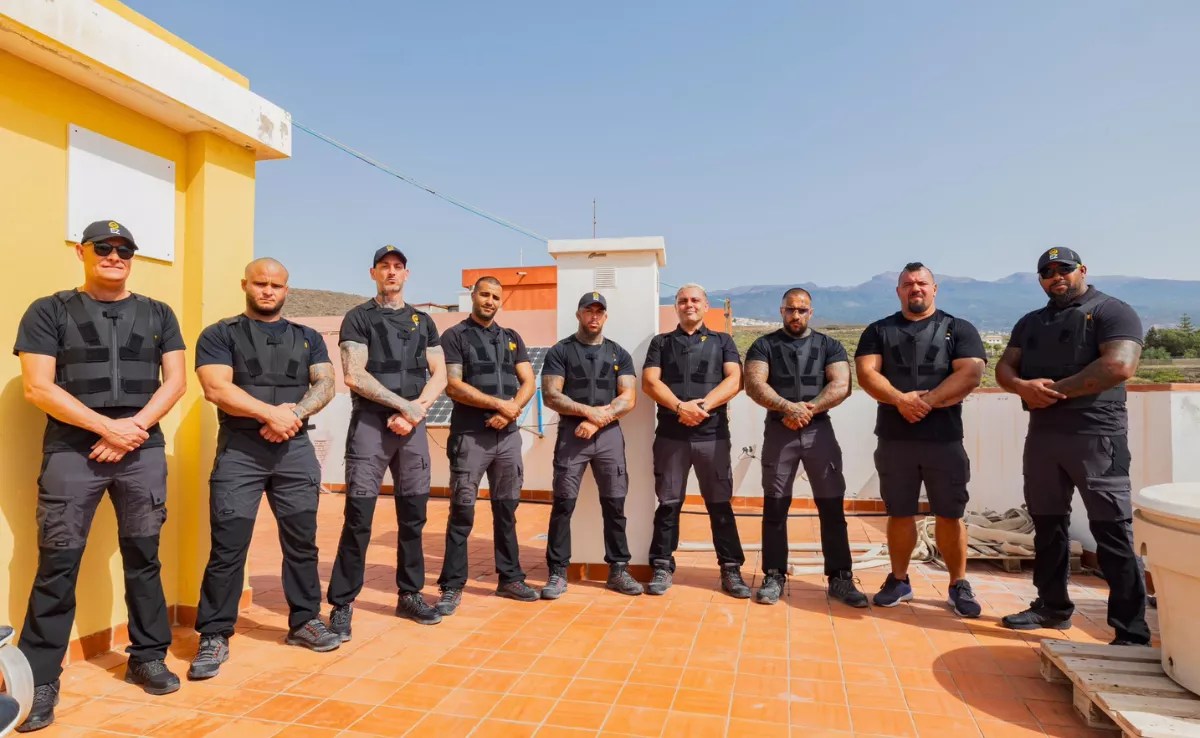The Government Council of the Canary Islands has granted approval on Monday to implement article 169 of the Land Law to halt planning in the vicinity of the Santa Cruz de Tenerife Refinery, as a preliminary measure for initiating a public participation process aimed at developing the Santa Cruz Verde 2030 plan.
This was conveyed during a press briefing by the Executive’s spokesperson, Alfonso Cabello, who disclosed that the process is set to commence in January and will extend for a minimum of the next two years across four phases: information gathering; the establishment of participatory tables and workshops; responding to proposed amendments; and assessing the feasibility of the suggestions put forth.
He emphasised that the initiative presents a “blank canvas” and a “chance” to foster job creation and develop new economic hubs over an area spanning approximately 570,000 square metres, with 67% designated for public utilisation, in accordance with the protocol signed in 2018 by Cepsa and the Canarian institutions.
Cabello noted that this marks the second instance of planning being suspended under these circumstances within the archipelago (the previous case occurred in Teror during the last legislative term) and that the Santa Cruz Verde 2030 plan is one of the most significant urban regeneration initiatives in both Spain and Europe.
He further indicated that this process aligns with the Spanish Urban Agenda, the SDGs, and the Canarian Agenda 2030, representing a “singular opportunity” for public institutions and the two universities, approached from an “environmental, economic, and social perspective.”
He also remarked that the suspension of planning, already executed by both the Santa Cruz de Tenerife City Council and the Cabildo, will enable the “blocking” of all documentation relating to the refinery, now categorised as industrial land, and facilitate the design of future developments, thereby reducing the time frame (in a conventional approach, the process could take up to three and a half years). It is pertinent to mention that part of the land necessitates a decontamination phase, as highlighted in a report from the Government of the Canary Islands, prepared by the then Vice-Ministry of the Environment and referenced in 2019 by Sí Se Podemos Councillor Pedro Arcila during a questioning of the then Urban Planning Councillor in Santa Cruz, Carlos Tarife. This report indicated the presence of metals such as arsenic, lead, copper, nickel, and zinc, which in several instances exceed the established reference values, alongside a notable presence of hydrocarbon pockets that impact both soil and groundwater.
The Government spokesperson pointed out that Santa Cruz Verde 2030 is “the most extensive urban planning initiative ever conducted in the Canary Islands,” and that an office will be established to facilitate coordination among the various departments involved in its execution.
“It is a complex roadmap,” he underscored, emphasising that the public aspect involves producing a “detailed outline” of roadways, public amenities, the number of homes that can be constructed, and whether soil decontamination processes are necessary.
As outlined in the technical report from the General Directorate of Territorial Planning and Territorial Cohesion, there are also provisions for the placement of strategically significant infrastructures of island relevance, particularly those associated with transport and mobility.
Speculation, gentrification and increased tourism
The venture, which intends to include substantial proportions of green spaces, residential zones, and hotel accommodation for the city, is likely to lead to increased speculation, displacement of the local population, and a rise in the cost of living, as noted by Marcus Hübscher, a Doctor of Urban Planning from the University of Leipzig (Germany) and an expert who has studied this plan for several years.
This cartographer has highlighted on numerous occasions the “lack of transparency” surrounding the initiative, noting that stakeholders and developers disagree on certain aspects of the operation; and also that it will trigger a significant influx of tourists and short-term rentals. In this instance, in a recent chapter of his study published in the journal Springer, Hübscher examines the similarities and distinctions between this project and that of Cabo Llanos, which commenced in the 1990s also in Santa Cruz de Tenerife and which, akin to the current proposal, marked a pivotal change in the urban development of the capital of Tenerife.
Hübscher believes that Santa Cruz Verde 2030 is fundamentally distinct from the Cabo Llanos scheme as it intends to create green areas within 41% of the operational unit, a feature absent in the previous initiative, which has been one of its “clearest shortcomings,” according to the expert. Nonetheless, this dedication to urban gardens and parks conceals “a concealed commercial rationale” that entails “the enhancement of surrounding neighbourhoods.” Essentially, the geographer contends that the value of homes adjacent to these regions will rise significantly, making it difficult for local inhabitants to purchase one and resulting in a process of “green gentrification,” as observed in various locations globally, according to research findings.
A study released in 2003 disclosed that in Cabo Llanos there was a “process of elitisation” following the redevelopment of previously industrial land. The entry of large real estate corporations into the market contributed to transforming it into “the priciest area of the city” and “the expropriations and demolitions of properties precipitated a genuine population exodus from the area.” The urban plan for Cabo-Llanos encompasses over one million square metres, featuring numerous shopping centres, high-rise structures, and residential blocks, with the aim of “establishing a new representative urban centre” for the citizens of Tenerife’s capital. However, 17 out of the 18 participants consulted by Hübscher criticise it for resembling a “bedroom community” exuding a “sterile ambiance.”
















